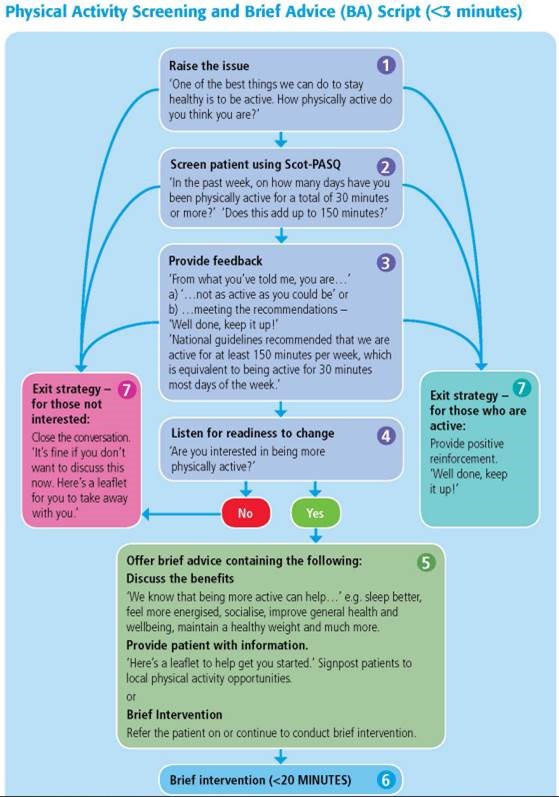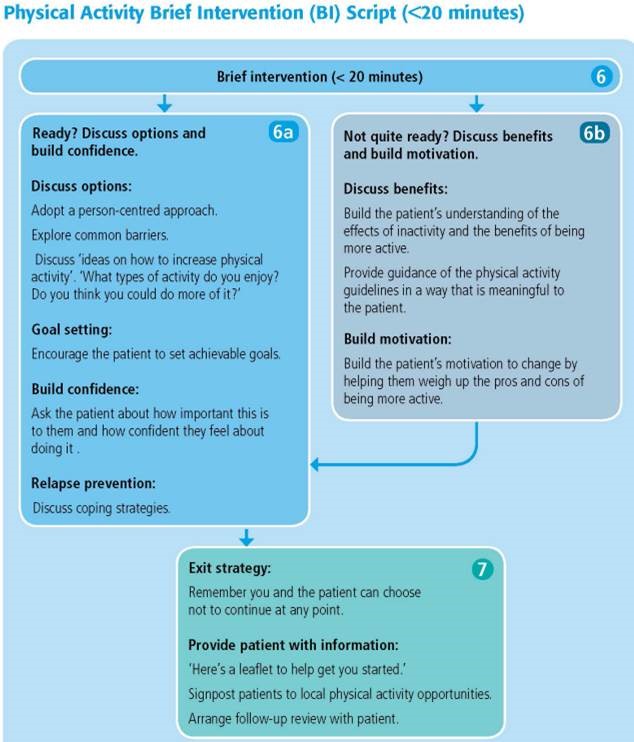The benefits of physical activity for people living with long term conditions are well established. However, the fear of increasing symptoms or worsening long term problems commonly stops people from moving more. Many healthcare professionals also feel unsure about what advice they should give to people living with symptomatic medical conditions.
This page has some useful tips to help start the conversation with a patient on how they can be more active. There are also visuals on screening and brief advice and how to offer physical activity interventions to your patients.
Starting the conversation with your patients
Conversations may arise in a planned way as part of a programme or during routine screening or assessment. Example planned – “As part of assessing clients’ needs, we routinely ask some questions about health and lifestyle. How would you feel about having a quick chat about this?”
Alternatively, it might be client-led, where the person themself raises the issue (either directly or indirectly). Example client-led – “ I know I need to be more active I just don’t know where to start”.
The most common (and most challenging) is the opportunistic approach, where you can see the possible links between a condition, issue or concern the person has and their behaviour. For example, between their breathing or poor mobility and lack of physical activity. Example opportunistic – “Some people find that a lack of physical fitness and being active makes them quite breathless especially if they have to hurry to get somewhere, I’m wondering if that might be relevant for you?”.
To learn more about raising the conversation of physical activity, visit or enrol in:
- Moving Medicine: The ultimate resource to help healthcare professionals integrate physical activity conversations into routine clinical care.
- MAP of health behaviour change: helping people to make and maintain behaviour change: The MAP (Motivation, Actions & Prompts) of Health Behaviour Change is the NES Learning Programme for all health and care practitioners whose role provides them the opportunity to help people make positive health and lifestyle related changes.
- Supporting older people to live active lives | Turas: This learning programme makes use of resources developed as part of the Care about Physical Activity (CAPA) programme which was run by Scotland’s Care Inspectorate, together with other online videos and resources.
One minute conversation
- Raise the subject of physical activity with your patient(s) as per planned, client-led and opportunistic.
- Talk about the benefits of being more active, more often every day.
- Encourage an open-door policy for example my door is always open if you want to come back and have a chat about it some other time.
Use the Scot-PASQ to support a meaningful physical activity conversation to screen and offer brief advice.




